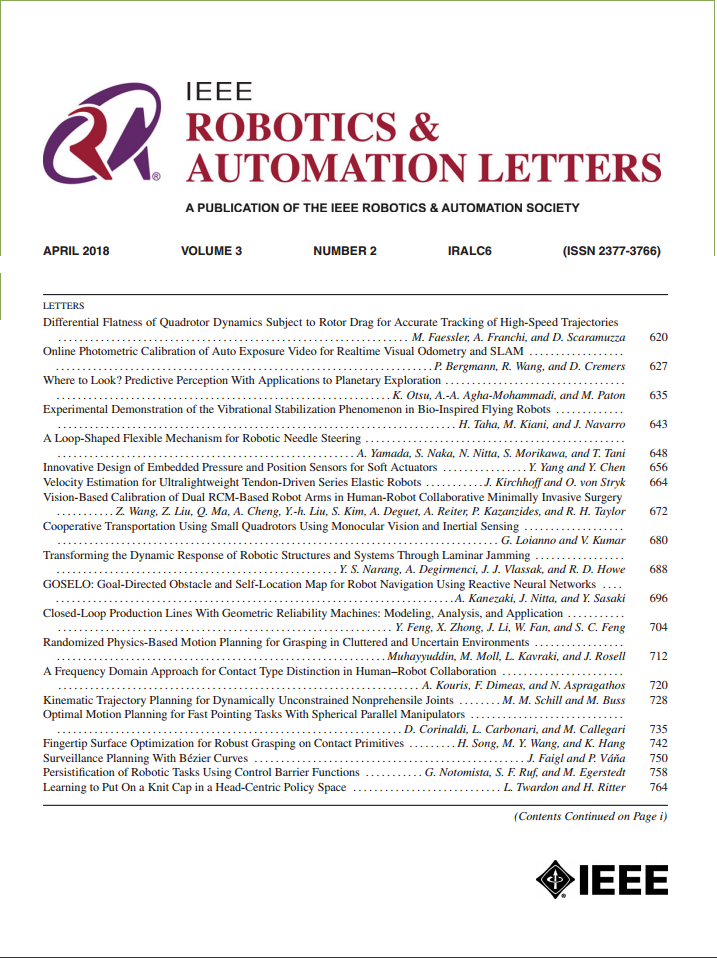PEnG: Pose-Enhanced Geo-Localisation
IF 4.6
2区 计算机科学
Q2 ROBOTICS
引用次数: 0
Abstract
Cross-view Geo-localisation is typically performed at a coarse granularity, because densely sampled satellite image patches overlap heavily. This heavy overlap would make disambiguating patches very challenging. However, by opting for sparsely sampled patches, prior work has placed an artificial upper bound on the localisation accuracy that is possible. Even a perfect oracle system cannot achieve accuracy greater than the average separation of the tiles. To solve this limitation, we propose combining cross-view geo-localisation and relative pose estimation to increase precision to a level practical for real-world application. We develop PEnG, a 2-stage system which first predicts the most likely edges from a city-scale graph representation upon which a query image lies. It then performs relative pose estimation within these edges to determine a precise position. PEnG presents the first technique to utilise both viewpoints available within cross-view geo-localisation datasets, referring to this as Multi-View Geo-Localisation (MVGL). This enhances accuracy to a sub-metre level, with some examples achieving centimetre level precision. Our proposed ensemble achieves state-of-the-art accuracy - with relative Top-5 m retrieval improvements on previous works of 213%. Decreasing the median Euclidean distance error by 96.90% from the previous best of 734 m down to 22.77 m, when evaluating with求助全文
约1分钟内获得全文
求助全文
来源期刊

IEEE Robotics and Automation Letters
Computer Science-Computer Science Applications
CiteScore
9.60
自引率
15.40%
发文量
1428
期刊介绍:
The scope of this journal is to publish peer-reviewed articles that provide a timely and concise account of innovative research ideas and application results, reporting significant theoretical findings and application case studies in areas of robotics and automation.
 求助内容:
求助内容: 应助结果提醒方式:
应助结果提醒方式:


